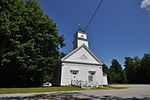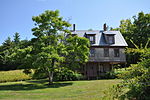Camp O-AT-KA

Camp O-AT-KA is a non-profit summer camp for boys in East Sebago, Maine, on the western shore of Sebago Lake. Founded in 1906 by Rev. Ernest Joseph Dennen of Lynn, Massachusetts, it is to date the oldest continuously running summer camp in the United States. It began its life as the summer camp of the Order of Sir Galahad, an Episcopal church organization founded by Dennen in 1896. Originally founded as an explicitly Episcopalian camp, O-AT-KA may have allowed some Jewish campers as well. In the modern period, it is open to campers of all backgrounds. It runs as a traditional summer camp for boys aged 7-16 and is accredited with the American Camp Association.During the off-season, O-AT-KA is also a popular venue for weddings and other events. It has been featured on Martha Stewart's website, described as making one, "feel like you stepped into a Wes Anderson film."
Excerpt from the Wikipedia article Camp O-AT-KA (License: CC BY-SA 3.0, Authors, Images).Camp O-AT-KA
Camp-O--At-Ka Road,
Geographical coordinates (GPS) Address Website Nearby Places Show on map
Geographical coordinates (GPS)
| Latitude | Longitude |
|---|---|
| N 43.8752 ° | E -70.6328 ° |
Address
Camp O-AT-KA
Camp-O--At-Ka Road
04029
Maine, United States
Open on Google Maps






